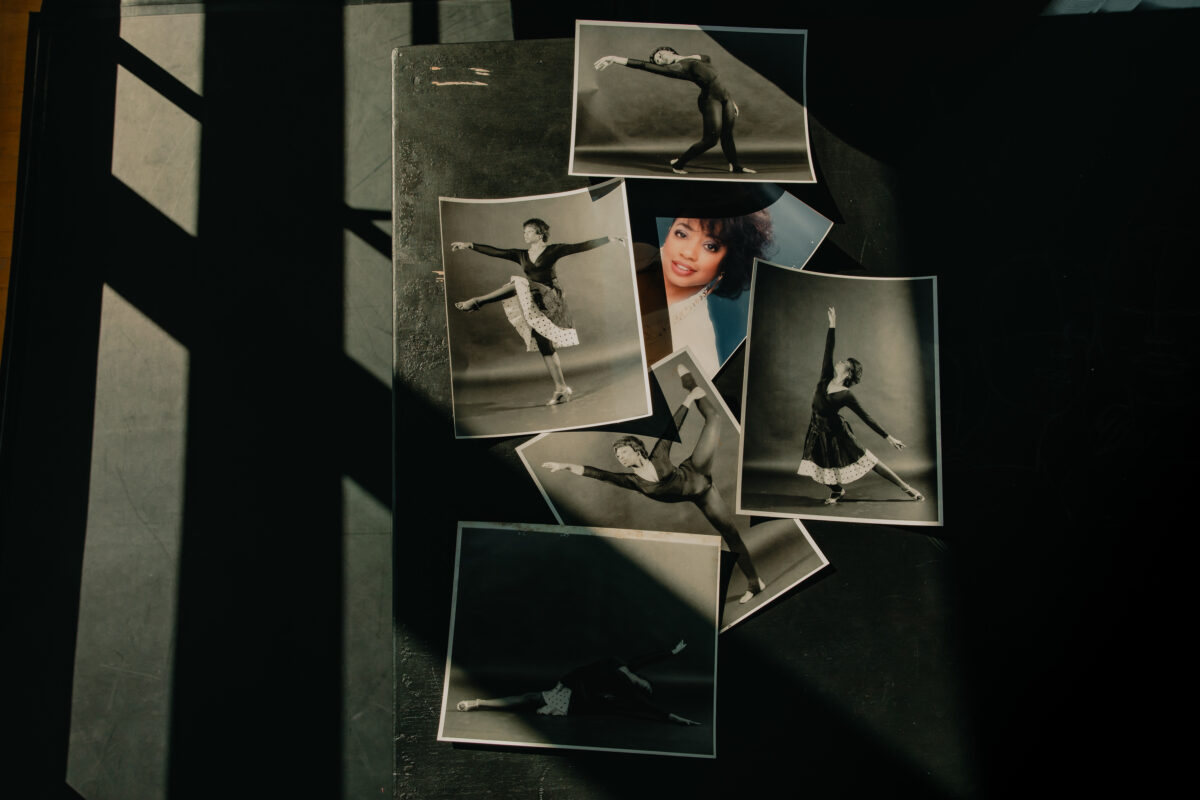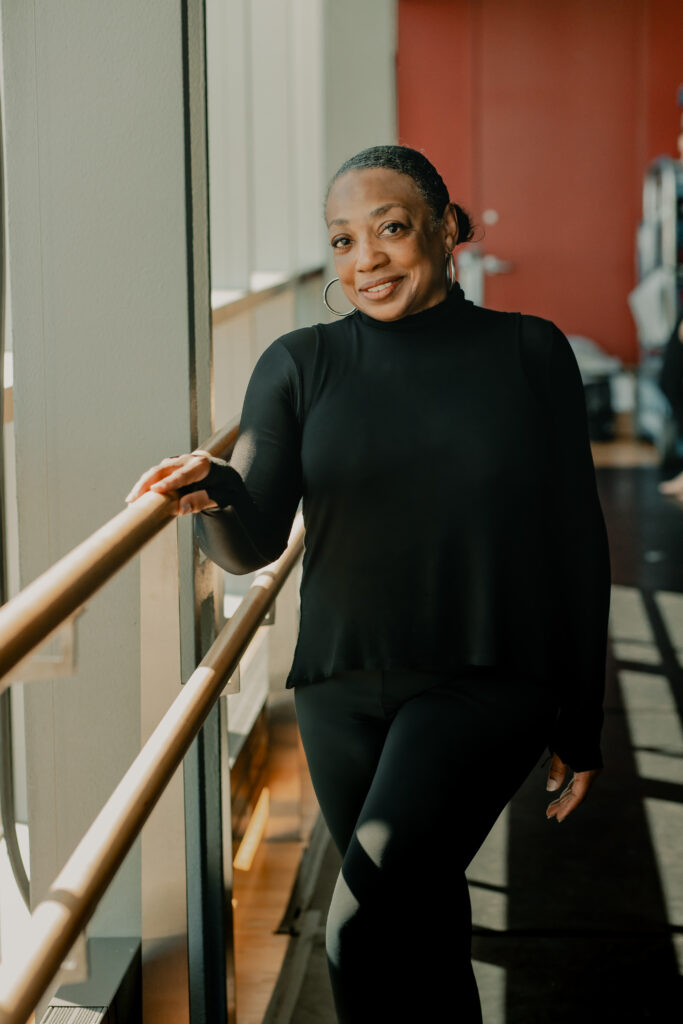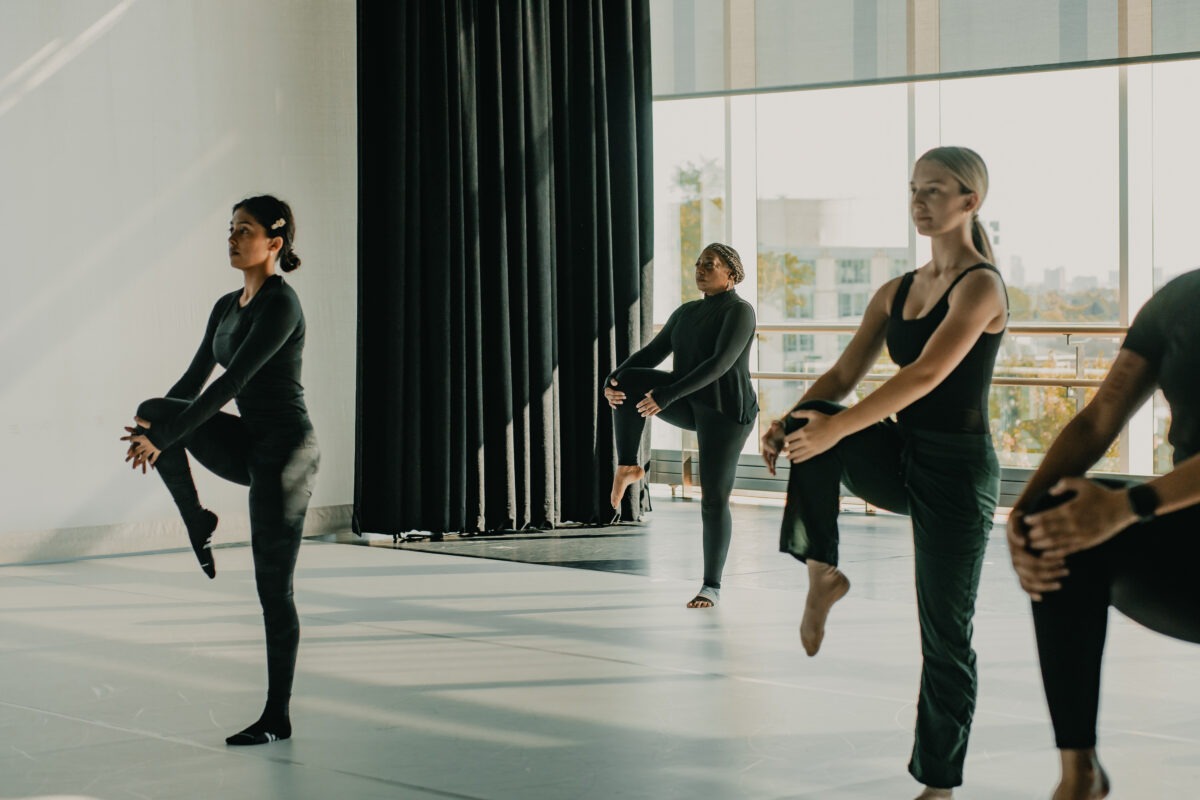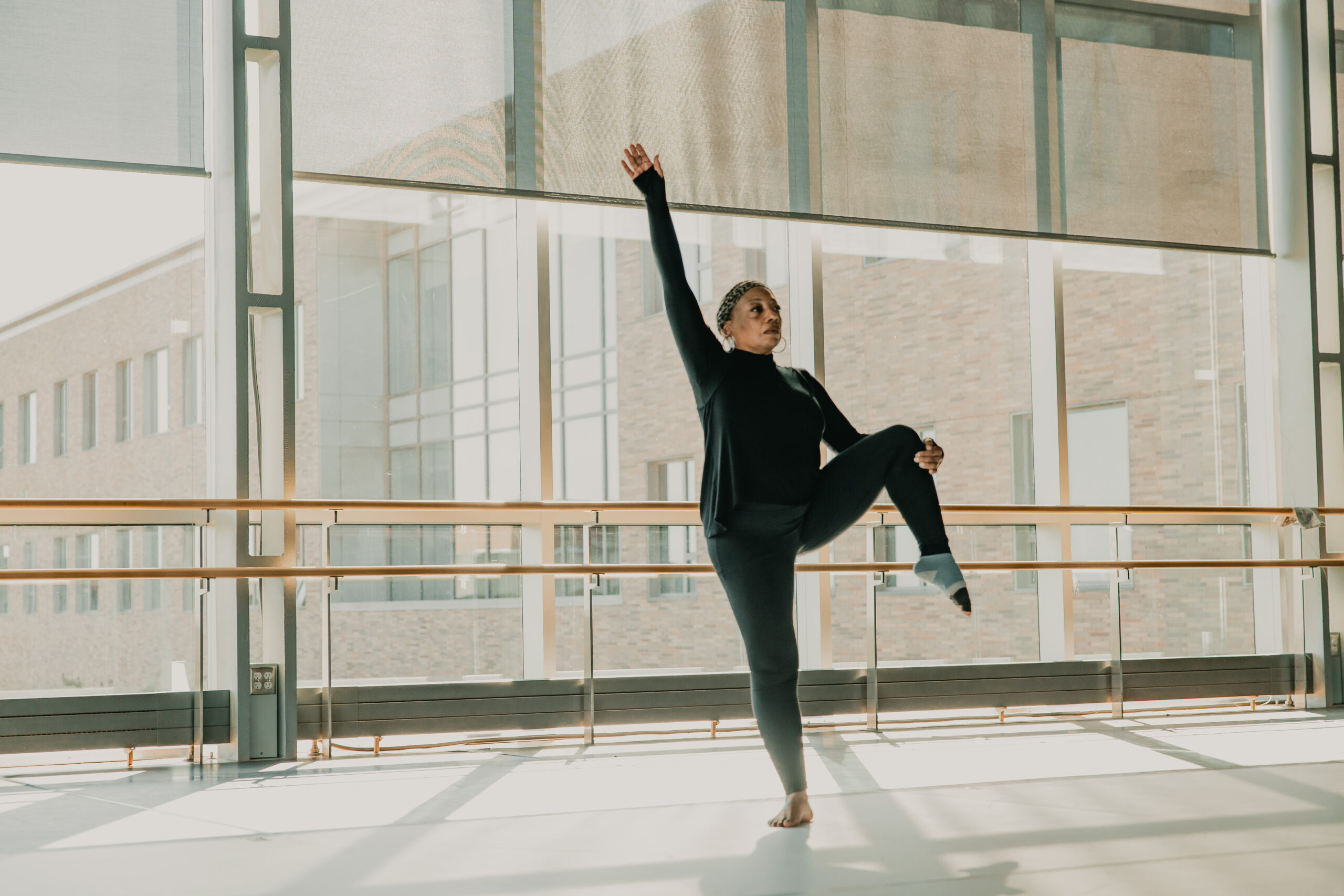In the fall of 1977, Jimmy Carter was president. NASA launched the Voyager I fly-by mission past Jupiter and Saturn. “The Mary Tyler Moore” show earned an Emmy for outstanding comedy, and the Atari 2600 gaming system went on the market. The Emotions’ “The Best of My Love” hit number one on the pop charts.
It was also the year Baltimore native Teresa Kearney entered UMBC as a dance major. But her route to a dance degree has been circuitous. She anticipates graduating in 2025.
From the classroom to the dance floor
At Walbrook High School in West Baltimore, Kearney danced under the direction of Beverly Marshall Johnson, who she still keeps in touch with today. As a young dancer, she performed regularly on TV channel 45’s “Soul City” (later renamed “Moonman Connection”)—a teen-dance show akin to the beloved “Soul Train” and “American Bandstand.” Kearney was accepted to UMBC with scholarships but, after two years, she heeded the call of Hollywood and decided to take a chance on professional dance opportunities on the West Coast.

By 1979, Kearney and her dance partner were regulars on the competitive social dance circuit. “We were getting really popular, my dance partner and I,” she says. “We got a chance to go to Hollywood and be on ‘Dance Fever’ and compete from state to state, city to city. We made our living in dance for a long time.”
Kearney held onto the goal of a UMBC degree for decades as life intervened. In between, she took on acting roles, was an instructor for LaBlast Fitness under Louis van Amstel of “Dancing with the Stars,” graduated from the Broadcasting Institute of Maryland for air talent for radio and TV, including an FCC license, sold insurance and real estate, and helped put her nephew through medical school, to name a few of her jobs and activities. “Then my mother, Lillie Kearney, passed away three years ago. She was also a dancer, and I thought this is the time for me to go back to college,” she says. “It was on my bucket list.”
Keeping the standard

As a long-time professional dancer—who never actually retired—Kearney continues to challenge herself by learning new techniques and styles. And she’s worked hard to re-train her body after decades dancing in heels on Latin and social dance circuits. “I’m still learning,” she says. “There’s a contemporary African dance class required now for all dance majors. For a two-and-a-half-hour class, it’s very energetic. And even though I’m 65, we all have challenges in that class,” she notes of her younger classmates.
Ballet instructor Alison Crosby could see Kearney was working hard, and says, “Teresa made it easy for me to keep the standard of the course, because she asked for no changes, asked for nothing to be different.” Plus, by showing up on time, preparing her body with gentle stretches to warm up her muscles and feet, and finding her place at the barre, Kearney modeled the appropriate dancer’s discipline that is expected in professional classes and rehearsals.
“Her experience in dance is wide and professional,” Crosby adds, “and she modeled the discipline and respect for coming to ballet class.” As an instructor, Crosby noticed how easily Kearney connected with her much younger classmates. “Teresa was involved with even the first-years. They all saw Teresa with great respect.”
In fact, Kearney shares that her classmates in the dance program often seek her out for advice or just a listening ear. She’s noticed that these students face far more self-doubt and pressures than she did when she was a student in the 1970s.

“Last semester, I was talking with a group of students,” Kearney recalls. “We were overwhelmed with classes and how hard it is. I said, ‘Wait a minute. We’re here getting a degree….We’re here to learn even when it’s hard.’”
“Once in a while,” Crosby says, “I’ll ask a student to show something as a positive model for the rest of the class. I asked Teresa…she just was dancing and using her eyes and her head so beautifully—everything she’d learned through her dance life. It’s still in her—that artistry through all the years and her different careers—her artistry has just stayed with her.”
By Lisa Traiger
Tags: At Play, CAHSS, Dance, Fall 2024, Performing arts

